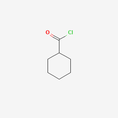Leakage emergency treatment
Evacuate the personnel in the contaminated area to a safe area quickly, isolate them, and strictly restrict access. Cut off the ignition source. It is recommended that emergency personnel wear self-contained positive pressure respirators and fire protection clothing. Cut off the source of leakage as much as possible to prevent it from entering the restricted space such as sewer and drying ditch.
Small amount of leakage: absorb with sand vermiculite or other incombustible materials. Or incinerate on site when safety is guaranteed.
Large amount of leakage: build a dike or dig a pit to receive. Cover with foam to reduce steam disaster. Use explosion-proof pump to transfer to tank car or special collector for recycling or transport to waste disposal site.
Protective measures
Respiratory system protection: When the concentration in the air exceeds the standard, you should wear a self-priming filter type gas mask (half mask). In case of emergency rescue or evacuation, it is recommended to wear self-contained breathing apparatus.
Eye protection: wear chemical safety goggles.
Body protection: wear protective clothing against poison penetration.
Hand protection: wear rubber gloves.
Others: Smoking is strictly prohibited at the work site. After work, take a shower and change clothes. Pay attention to personal hygiene.
First aid measures
Skin contact: Take off the contaminated clothes and wash the skin thoroughly with soap and water.
Eye contact: lift the eyelids and wash them with flowing water or normal saline. Get medical attention.
Inhalation: quickly leave the site to a place with fresh air. Keep the respiratory tract unobstructed. If breathing is difficult, give oxygen. If breathing stops, perform artificial respiration immediately. Get medical attention.
Ingestion: drink enough warm water to induce vomiting. Get medical attention.




